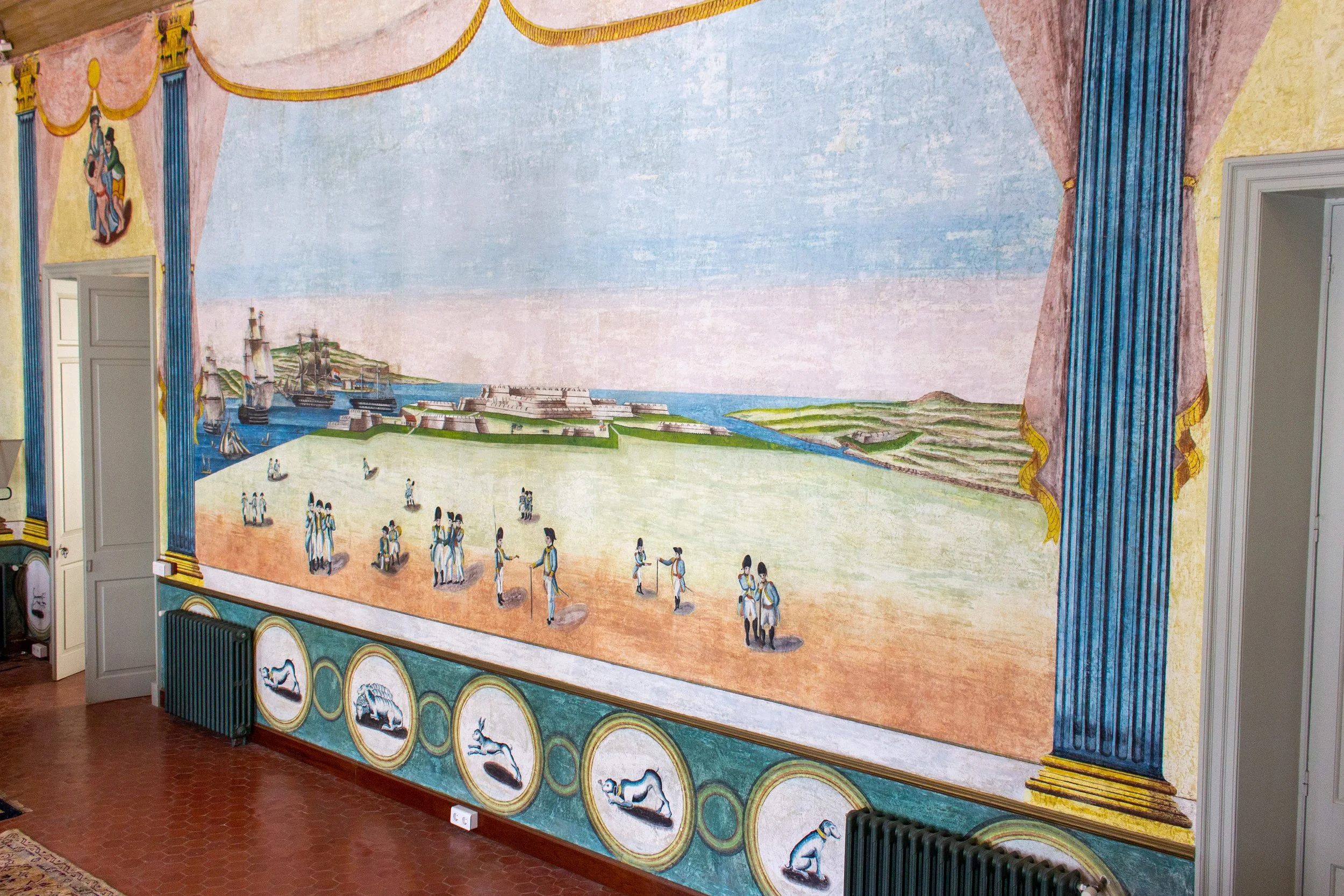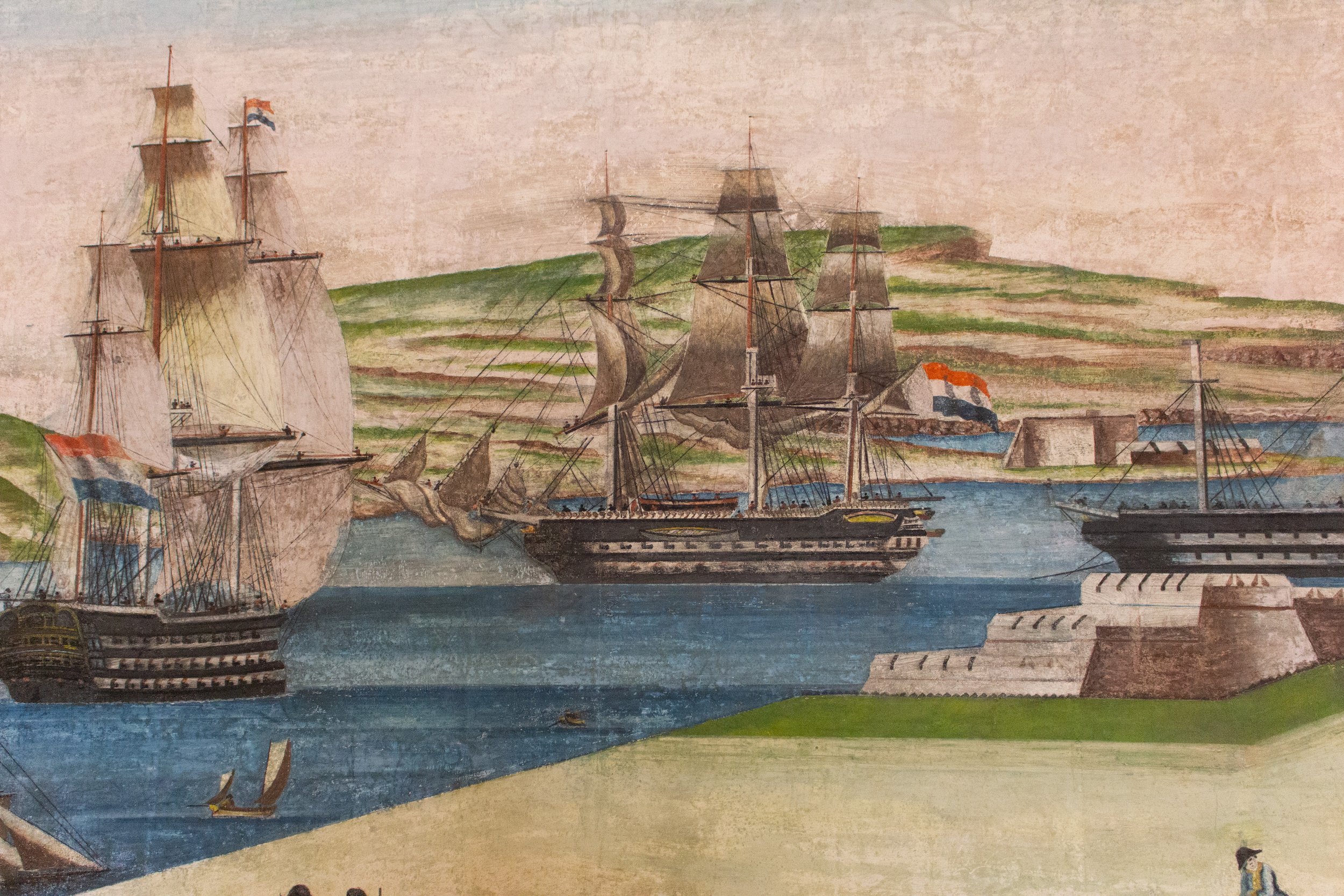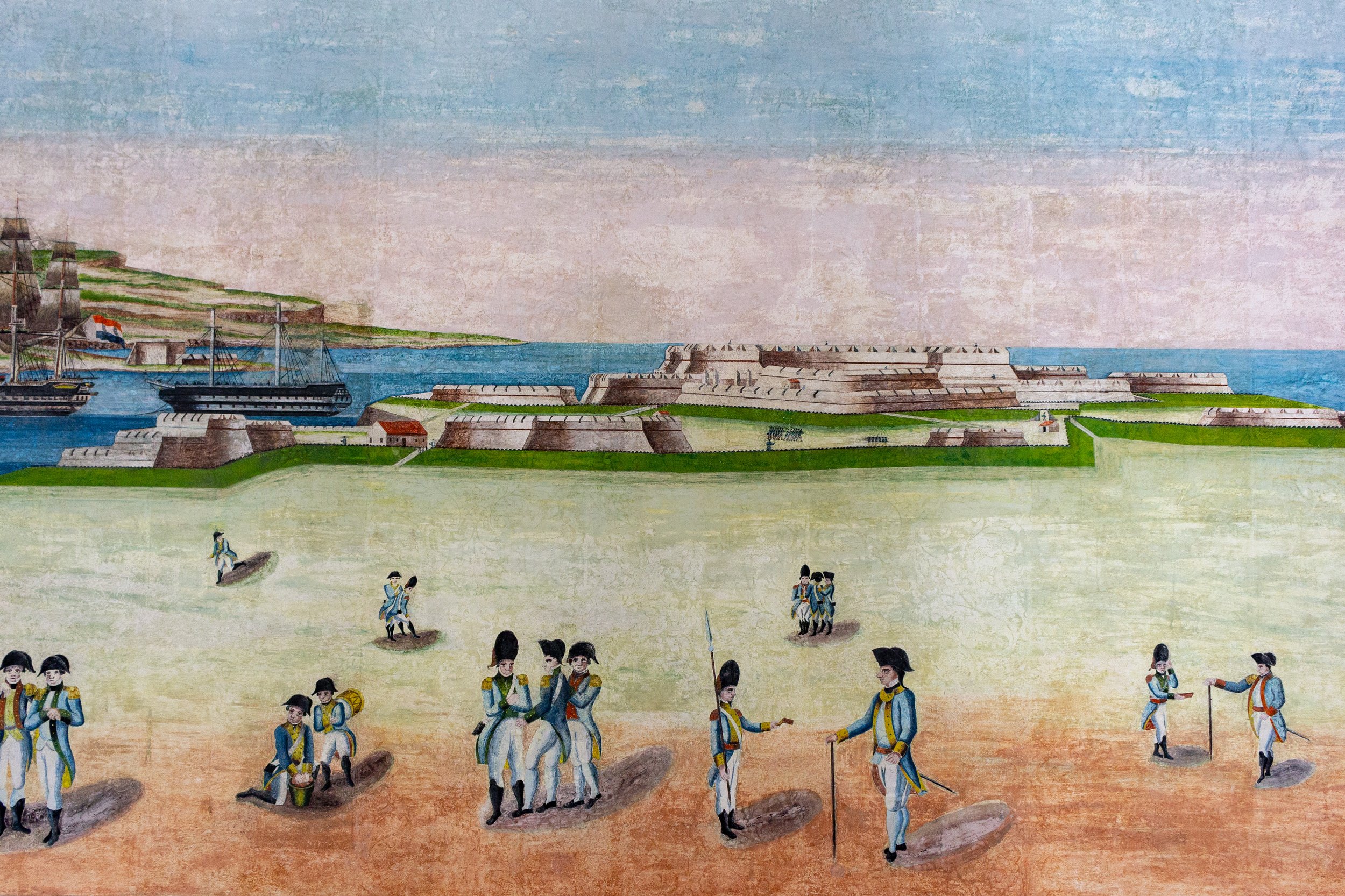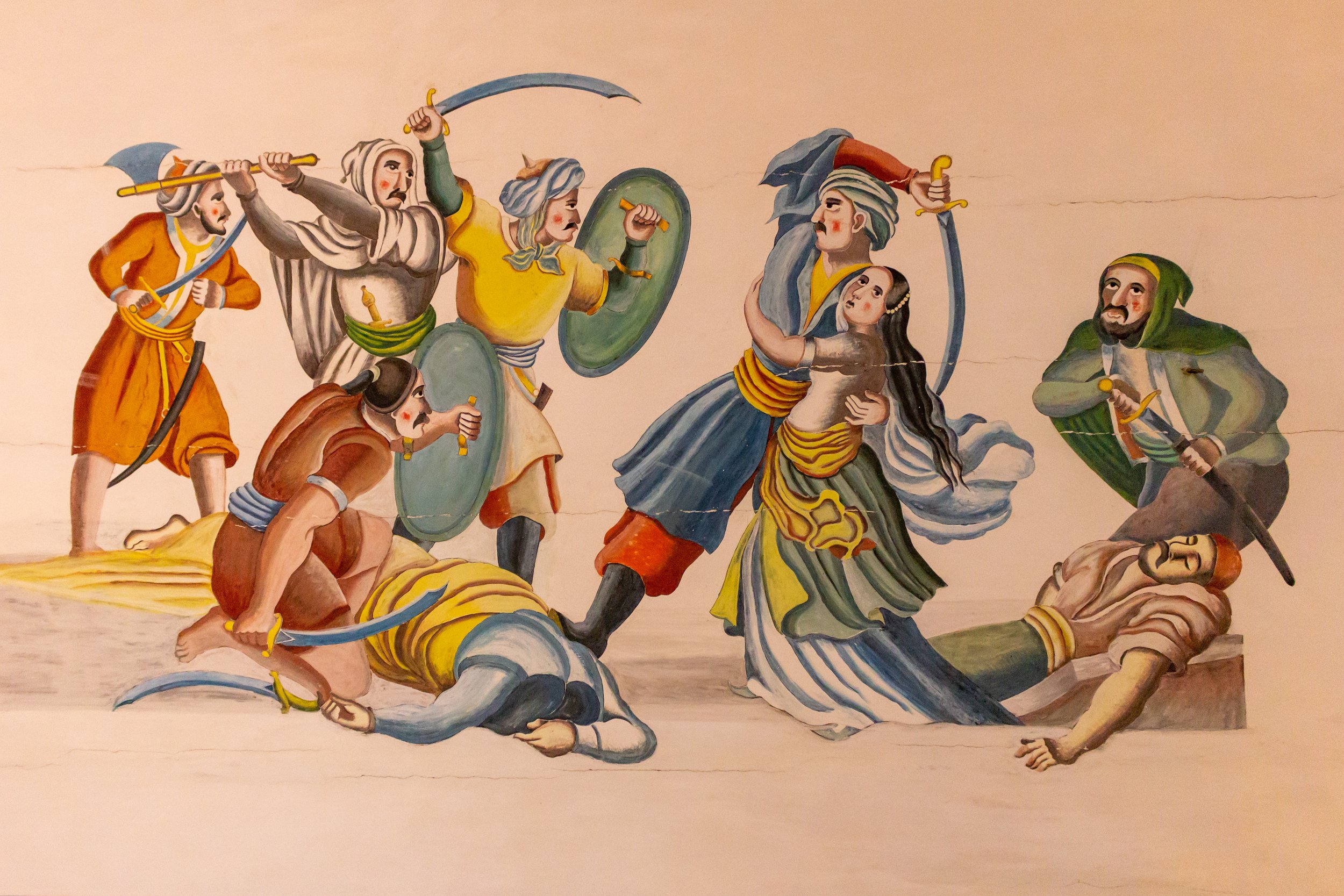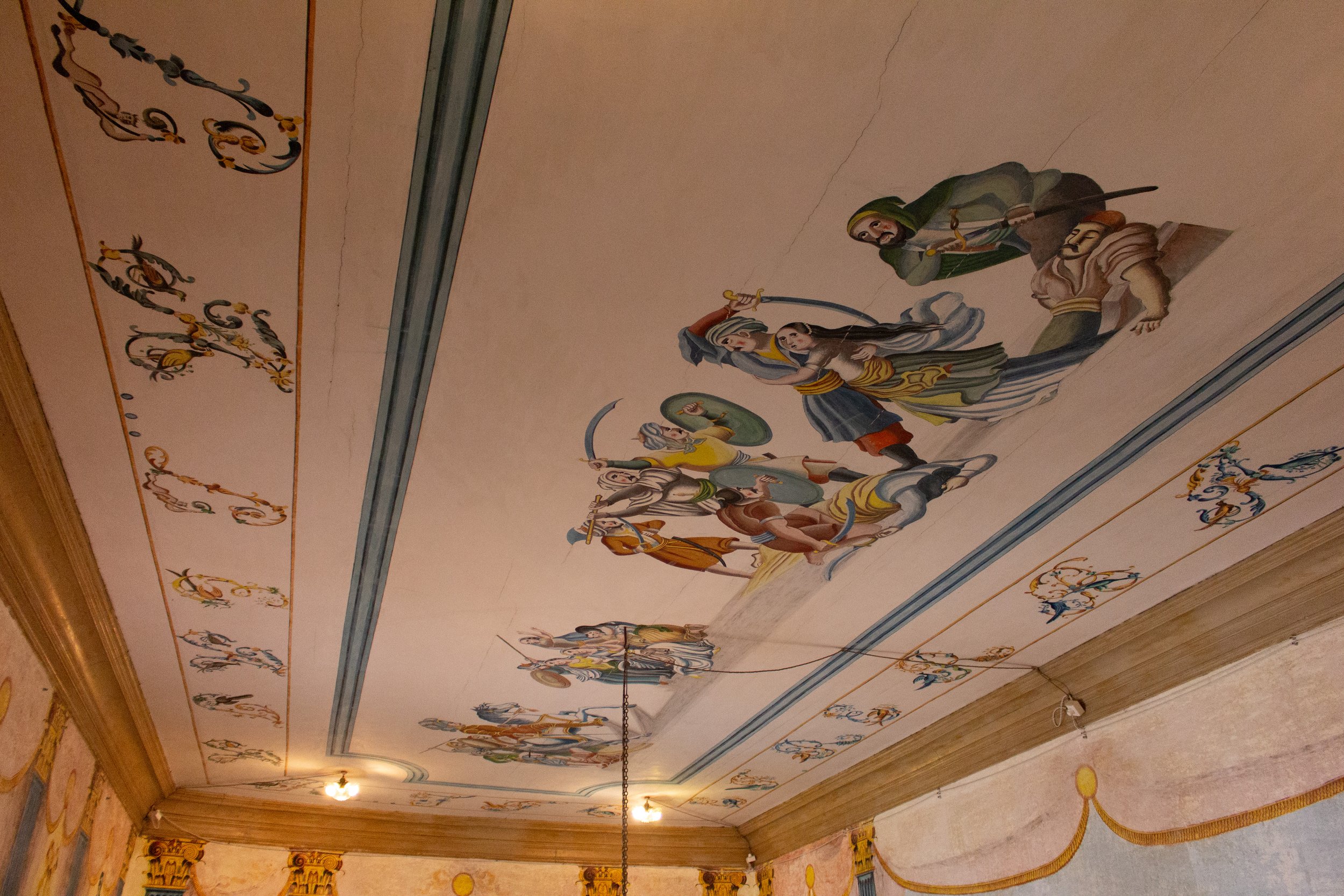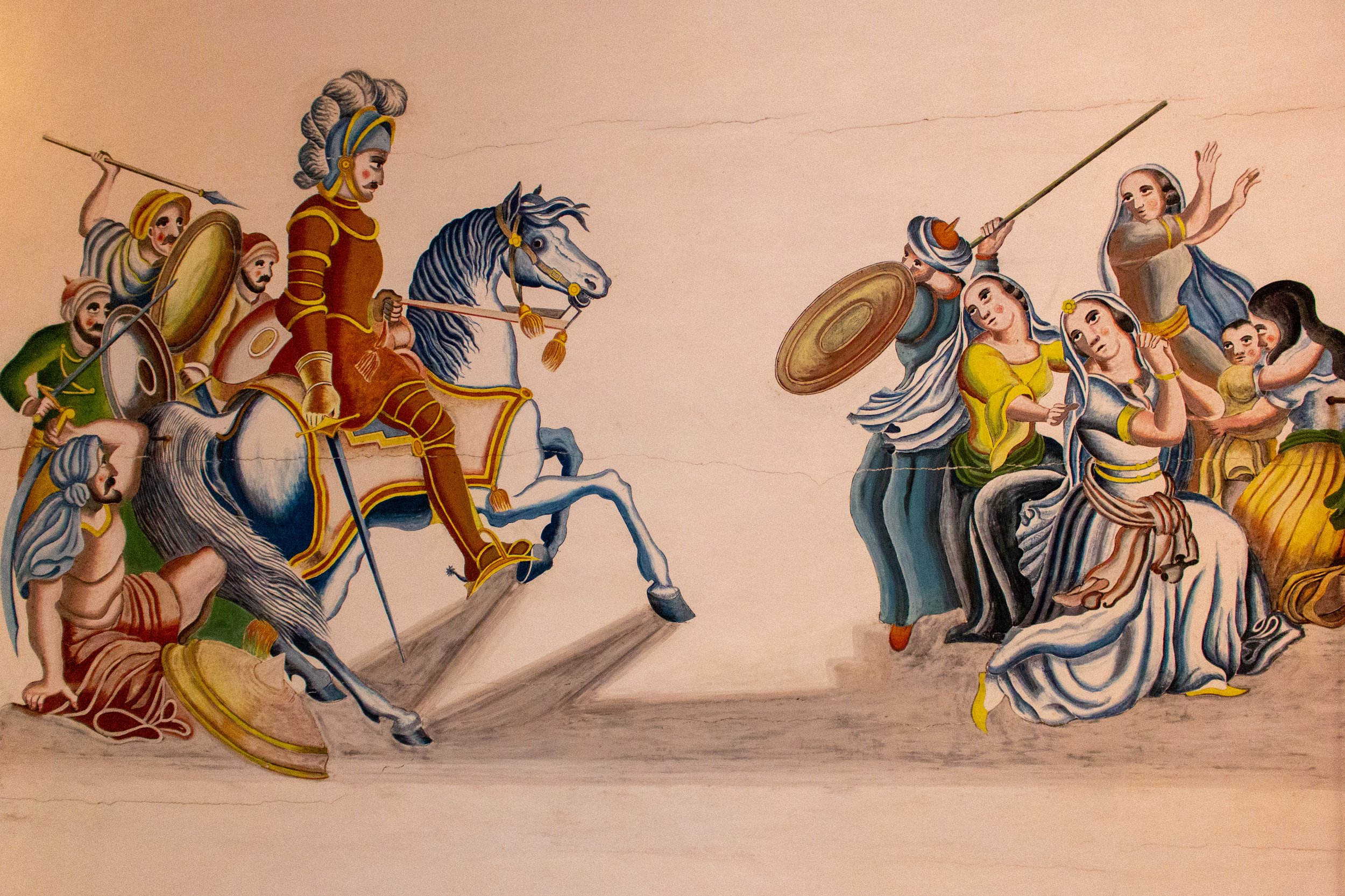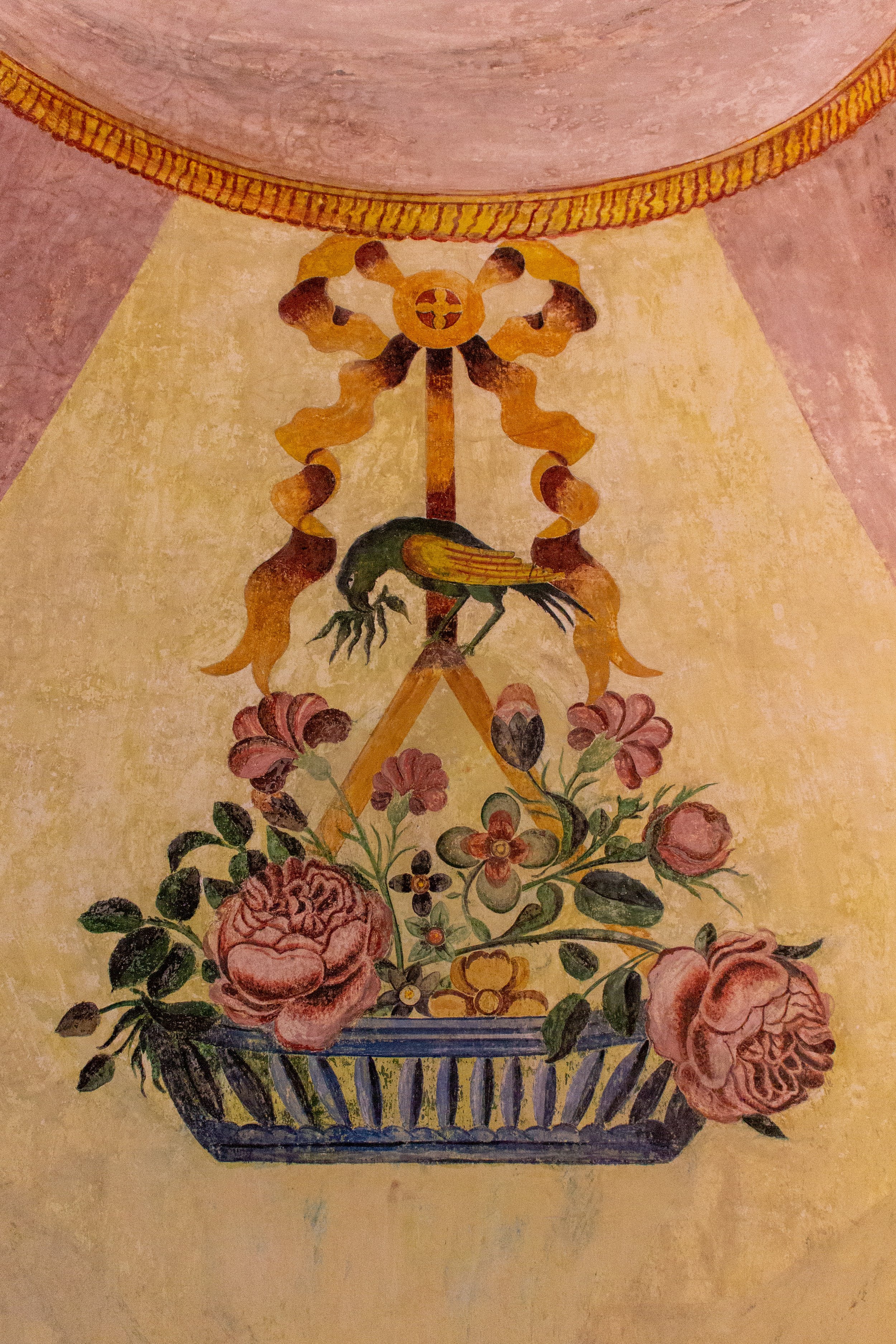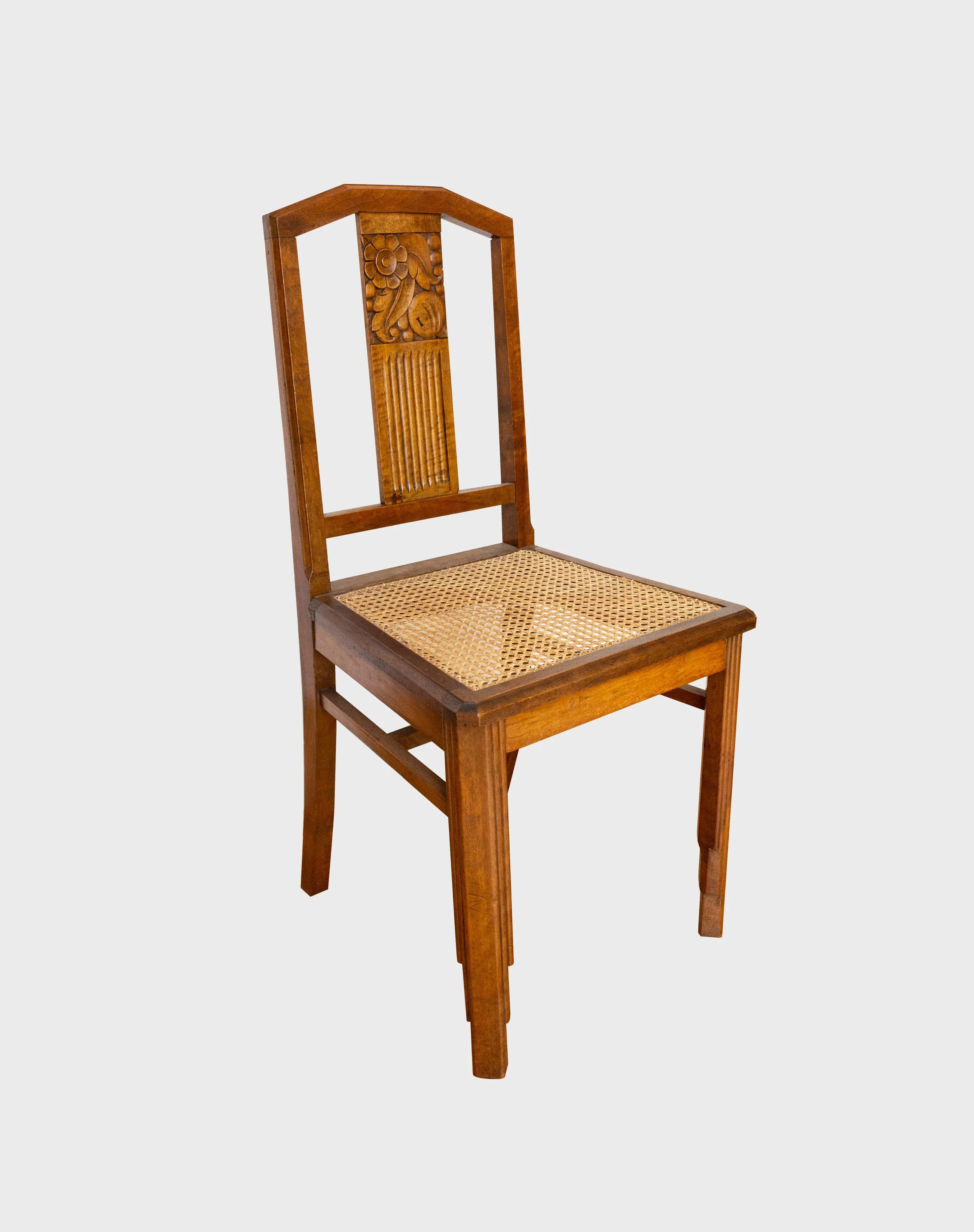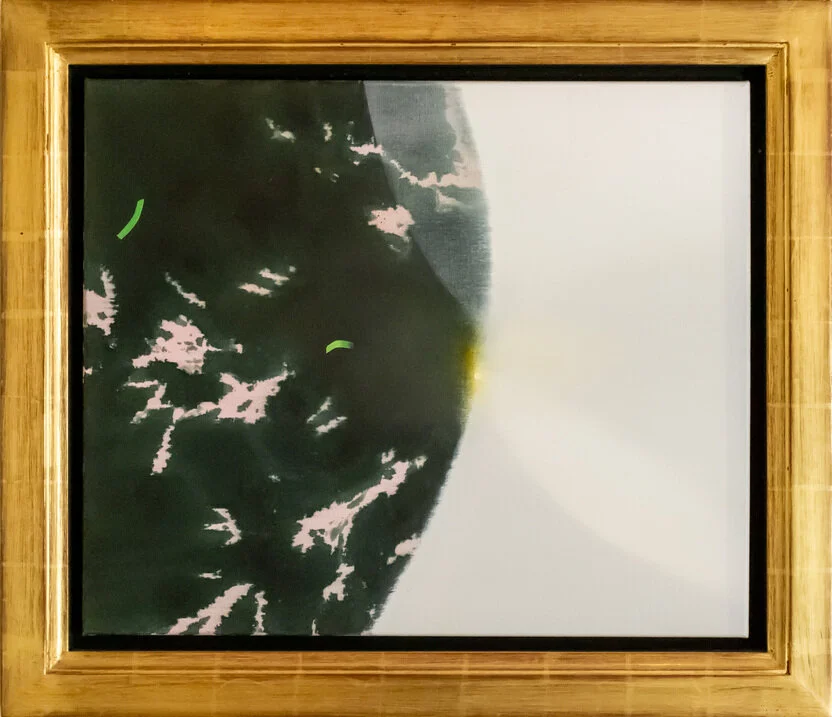01.02 Wall and ceiling paintings
English
Paintings by an unknown artist using tempera paints, created when the building was renovated in 1839. There are no signatures.
The decoration scheme for this grand first-floor reception room was created in 1839, when the house was extensively rebuilt by its owner Rafael Albertí as result of the widening of C/ Sant Cristofal (as c/ Isabel II then was) and the removal of the town wall bridge over c/ San Cristofal. Ceiling paintings. The ceiling, (repainted in the early 20thcentury) depicts moorish battle scenes, possibly showing Alfons III conquering Menorca in 1287. The inscription surrounding the painting reads (in reverse, and anti-clockwise from the east): RAFAEL ALBERTÍ I FEBRER FECIT, making reference to the owner of the house at the time of the painting. Land Registry records confirm that the house came into the possession of Rafael Albertí on February 14th 1837.
Wall paintings. The north, west and east walls show pillars with swags and curtains which frame figurative vignettes and decorative motifs. Around the dado are roundels showing mythical animals. On the south wall the painting (4.42m by 6.86m) of unknown authorship, depicts a maritime scene which centres on a depiction of Fort San Felip. Boats and ships are present at the harbour entrance to Mahón, and the foreground is populated by uniformed military personnel. The painting ‘borrows’ snatches from well-known canvas paintings and engravings from this period. This renders it something of a historical fantasy, but nonetheless it is a most unusual historical record. No known parallels exist in other houses in Mahón. During, probably the early 20th century, the wall paintings were entirely concealed by highly-embossed, gold-patterned wallpaper, in accordance with the trends of the time. The removal of this paper, without causing damage to the wall paintings was a consuming and delicate operation, involving pre-consolidation of the painting through the wallpaper, followed by gradual removal of the paper in a number of sequential steps. In total this work took from 2006 to 2015, and was largely undertaken by Viviana and Nadir López Novell.
Spanish
El plan de decoración de esta gran sala de recepción, situada en el primer piso, fue creado en 1839, cuando su proprietario Rafael Albertí la reconstruyó por completo como resultado del ensanchamiento de la calle San Cristóbal (en aquel entonces C/ Isabel II) y la sopresión de la pared del puente sobre la C/ San Cristóbal.
Pinturas del techo. El techo (repintado a principios del siglo XX) muestra escenas de batallas moriscas, posiblemente representa la conquista de Menorca por Alfonso III en 1287. La inscripción de alrededor de la pintura dice (al dorso, en el sentido contrario a las agujas de reloj, desde el este): RAFAL ALBERTÍ I FEBRER FECIT, en referencia al proprietario de la casa en ese momento. El Registro de la Propriedadconfirma que la casa pasó a ser posesión de Rafael Albertí el 14 de febrero de 1837.
Las pinturas de las paredes. Las paredes del norte, oeste y este muestra columnas con guirnaldas y cortinas que enmarcan unas viñetas figurativas y unos motivosdecorativos. Alrededor del friso hay unos medallones que contienen animales mitilógicos. En la pared del sur la pintura (de 4,42m por 6,86m) de autor desconocido, muestra una escena marítima que se centra enuna representación del Castillo de San Felipe. Hay barcos y buques en la entrada del puerto de Mahón, y el primer plano está poblado por personal militar uniformado. La pintura ‘evoca’ pasajes de lienzos y grabado bien conocidos de la época. Esto nos podría hace pensar en una fantasía histórica, sin embargo es un documento histórico de lo más inusual. No existe ninguno igual en otras casas de Mahón. Durante, probablemente, a principios del siglo XX, las pinturas de las paredes fueron ocultados totalment con papelde empapelar estampado en relieve y con dibujos dorados siguiendo la moda de la época. La extaccióndel papel ha sido una operación larga y delicada, teniendo en cuenta que se debían proteger las pinturas de las paredes. Por consiguiente, el trabajo suposo una pre-consolidación de la pintura a traves del papel de la pared, seguido de la extracción gradual del papel en un número de pasos consecutivos. Este trabajo se llevó a cabo desde 2006 hasta el 2015, y fue realizado, en gran parte por Viviana y Nadir López Novell.
